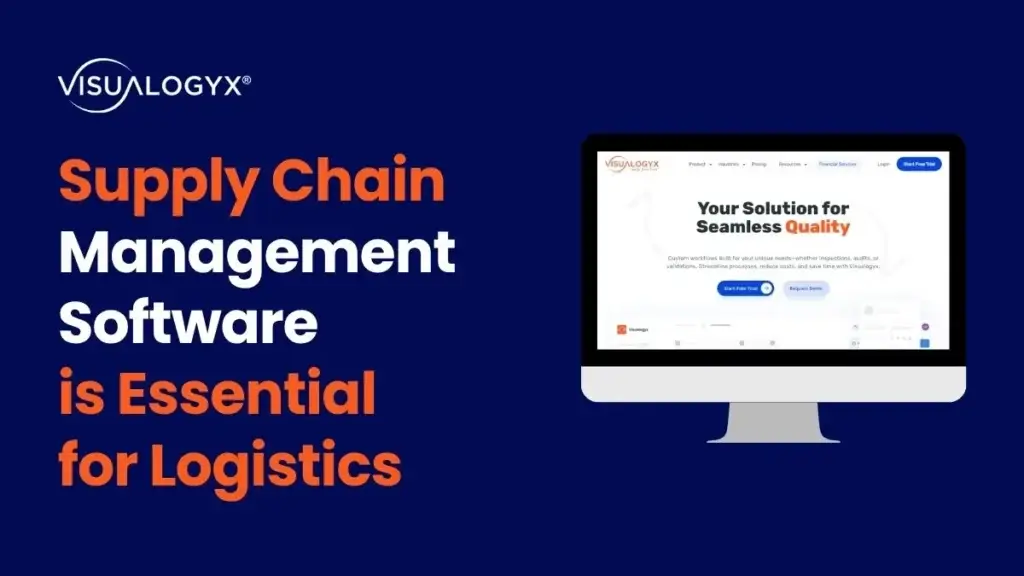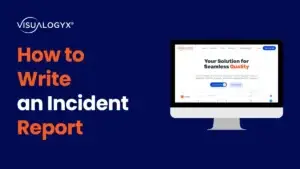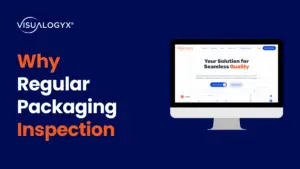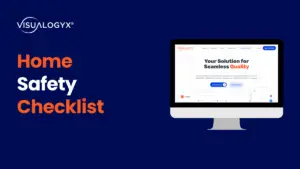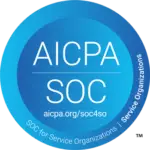Introduction
In today’s fast-paced business environment, maintaining an organized, efficient, and safe workplace is more crucial than ever. A cluttered, chaotic environment not only hampers productivity but also poses significant safety risks, leading to potential accidents and health hazards. That’s where the concept of a flawless 5S audit comes into play – it’s not just an organizational tool, but a comprehensive strategy designed to elevate workplace cleanliness and safety management to new heights.
Derived from five Japanese principles – Sort, Set in Order, Shine, Standardize, and Sustain – the 5S methodology is a systematic approach to creating an orderly environment that lays the foundation for enhanced operational efficiency and safety. This proven method goes beyond mere tidiness, embedding a culture of continuous improvement and meticulousness that benefits employees and businesses alike.
It encourages employees to take ownership of their workspace and actively participate in maintaining a clean and organized environment. Through the audit process, organizations can instill a sense of discipline and accountability, leading to improved morale and productivity among employees.
In this blog, we’ll dive deep into performing a successful and seamless 5S audit, detailing how each component contributes to the overall cleanliness and safety of your workplace. By embracing this methodology, organizations can not only ensure a more organized and efficient workspace but also foster a safer, more engaging environment for all employees.
Benefits of conducting a 5s audit
Conducting a 5s audit offers many benefits for organizations of all sizes. Let’s take a closer look at some of the key advantages:
- Improved productivity: A well-organized workspace reduces time wasted searching for tools, materials, or information. 5s principles can create an efficient layout that minimizes unnecessary movement and maximizes productivity. Employees can quickly locate what they need, leading to streamlined workflows and increased output.
- Reduced waste: The 5s methodology emphasizes the elimination of waste in all forms, including excess inventory, unnecessary processes, and non-value-added activities. Identifying and eliminating sources of waste results in cost savings and improved resource utilization.
- Enhanced safety: A clutter-free and well-maintained workspace reduces the risk of accidents and injuries. During a 5s audit, potential safety hazards can be identified and addressed promptly, ensuring a safer work environment for employees.
- Increased employee engagement: Involving employees in the 5s audit process fosters a sense of ownership and engagement. When employees have a direct role in improving their workspace, they feel valued and motivated to contribute to the organization’s success.
- Continuous improvement: The 5s methodology is not a one-time effort but a continuous journey towards operational excellence. Conducting regular 5s audits allows organizations to track their progress, identify recurring issues, and implement sustainable improvements.
Now that we understand the benefits of conducting a 5s audit, let’s delve into the five key principles underlying this methodology.
Understanding the 5s principles
The 5s methodology is built upon five key principles, each representing a vital aspect of workplace organization and efficiency:
- Sort: The first step in the 5s process is to sort through all items in the workspace and distinguish between essential and non-essential items. This step helps optimize inventory levels and ensures that only the necessary tools and materials, equipment, and other items are readily available.
- Set in Order: Once unnecessary items are eliminated, the next step is to organize the remaining items logically and efficiently. Tools, equipment, and materials are assigned designated locations. Visual cues, such as labels and shadow boards, are used to indicate where each item belongs, reducing the chances of misplacement and improving overall efficiency.
- Shine: A clean and well-maintained workspace is essential for a productive and safe work environment. The shine principle emphasizes regular cleaning and maintenance activities to ensure that workstations, equipment, and tools are in optimal condition, free from dirt, debris, and unnecessary clutter.
- Standardize: Standardization involves creating and implementing clear guidelines, procedures, and visual controls to ensure consistency and eliminate variation. This includes establishing policies and procedures to sustain 5S, along with monitoring systems and visual aids such as color-coding, signage, and clear visual instructions to effectively communicate and enforce standards.
- Sustain: Embedding 5S practices into the organization’s culture begins with regular audits, performance tracking, and continuous employee training. These elements are essential for maintaining the progress achieved through the first four principles. Sustaining requires ongoing commitment and discipline to ensure lasting improvements and continuous workplace enhancement.
By following these five principles, organizations can create a workplace that promotes organization, efficiency, and employee engagement. Now, let’s move on to the next section, where we will explore a comprehensive checklist for conducting a 5s audit.
The 5s audit checklist
The 5s audit checklist guides the adherence to the principles and standards of the 5s methodology. It helps identify areas of improvement and acts as a roadmap for corrective actions. Here is a comprehensive checklist that covers each component of the 5s system:
1. Sort:
– Are all work areas free from unnecessary items?
– Are there designated storage areas for essential tools and materials?
– Are obsolete or broken items properly disposed of or recycled?
– Are inventory levels optimized to minimize waste?
2. Set in Order:
– Are tools and equipment organized in a logical manner?
– Are there clear labels or visual cues indicating where each item belongs?
– Are storage areas properly labeled and easily accessible?
– Are there shadow boards or tool cribs to keep track of tools?
3. Shine:
– Is the workspace clean and free from dust, dirt, and debris?
– Are cleaning schedules established and followed?
– Are preventive maintenance activities regularly carried out?
– Are safety hazards promptly identified and addressed?
4. Standardize:
– Are standard operating procedures (SOPs) documented and communicated?
– Are visual controls, such as color-coding or signage, used to enforce standards?
– Are work instructions readily available and easily understandable?
– Are there mechanisms in place to ensure consistency and reduce variation?
5. Sustain:
– Are regular 5s audits conducted to monitor adherence to standards?
– Are audit results communicated and shared with employees?
– Are corrective actions promptly implemented?
– Are training programs in place to educate employees on 5s principles?
By using this checklist, you can systematically evaluate the different aspects of your workplace and identify areas that require improvement. In the next section, we will discuss how to conduct the 5s audit effectively.
Sign up with Visualogyx and download a free 5S Audit checklist template available in our Public Templates library.
Conducting the 5s audit
Conducting a 5s audit involves a structured approach to assess the current state of the workplace and compare it against the desired standards. Here are some key steps to follow when conducting a 5s audit:
- Assign responsibilities: Clearly define the roles and responsibilities of each audit team member. Assign specific areas or departments to be audited to ensure a comprehensive evaluation.
- Gather data: Use a 5s audit tool and checklist to collect data and observations during the audit. Directly assess items, layouts, and employee actions to identify compliance with 5S principles and highlight areas needing improvement.
- Observe employee behaviors: Pay attention to how employees interact with their workspace and adhere to the 5s principles. Observe if they follow standard procedures, maintain cleanliness, and utilize the designated storage and organization methods.
- Document findings: Record all findings, both positive and negative, as you conduct the audit. Take photographs or videos to provide visual evidence and support your observations.
- Provide feedback: Once the audit is complete, provide feedback to employees and management. Highlight areas of success and areas that need improvement. Use the results to spark constructive discussions and invite employee input on possible solutions. Then, develop a corrective action plan that assigns responsibilities, sets deadlines, and includes necessary steps such as training, workspace adjustments, or process updates.
By following these steps, you can conduct an effective 5s audit and gather valuable data to drive improvements. In the next section, we will discuss how to analyze the results of the 5s audit.
Analyzing the results of the 5s audit
Analyzing the results is crucial for identifying trends, patterns, and areas that require immediate attention. Here are some key steps to follow when analyzing the results:
- Review the audit findings: Carefully review the data collected during the audit. Look for recurring issues, trends, or patterns that indicate potential root causes.
- Identify areas for improvement: Based on the audit findings, prioritize areas that require immediate attention. Focus on areas that have a significant impact on productivity, safety, or waste reduction.
- Analyze root causes: Dig deeper into the reasons behind the identified issues. Use techniques such as the “Five Whys” or cause-and-effect diagrams to identify the root causes of the problems.
- Develop an action plan: Based on the analysis, develop a detailed action plan to address the identified issues. Assign responsibilities, set timelines, and establish measurable goals for each improvement initiative.
- Communicate the results: Share the results of the analysis with employees and management. Clearly communicate the identified areas for improvement and the action plan that will be implemented. Seek input and feedback from employees to ensure their buy-in and commitment.
By analyzing the results of the 5s audit, you can gain valuable insights into the current state of your workplace and take proactive steps to drive improvements. Now, let’s move on to the next section, where we will explore how to implement improvements based on the audit findings.
Implementing improvements
Implementing improvements based on the findings of a 5s audit is crucial to drive lasting change and achieve the desired outcomes. Here are some key steps to follow when implementing improvements:
- Prioritize improvement initiatives: Based on the audit findings and analysis, prioritize the identified improvement initiatives. Determine which initiatives will have the most significant impact and allocate resources accordingly.
- Develop an implementation plan: Create a detailed plan for each improvement initiative. Define the specific actions, responsibilities, timelines, and resources required to implement the changes effectively.
- Involve employees: Engage employees in the improvement process by seeking their input and involvement. Encourage them to share their ideas and suggestions for improvement. By involving employees, you can tap into their knowledge and expertise, increasing the chances of successful implementation.
- Provide training and support: If necessary, provide training sessions or workshops to educate employees on the changes being implemented. Ensure that they have the necessary skills and knowledge to adapt to the new processes or procedures.
- Monitor progress: Regularly monitor the progress of the implemented improvements. Track key performance indicators (KPIs) to measure the impact of the changes. Adjust if necessary and provide feedback to employees on their efforts and achievements.
By following these steps, you can effectively implement improvements based on the findings of the 5s audit and ensure lasting change in your workplace.
Maintaining the results of a 5S audit
To uphold the progress achieved, it’s vital to cultivate a pervasive 5S culture within the organization. This involves championing the principles of 5S across all levels and empowering employees to actively engage in preserving cleanliness and organization within their workspaces. Regular audits should be conducted to evaluate adherence to standards and pinpoint areas for enhancement. These audits serve as checkpoints to monitor progress and provide valuable feedback to both employees and management.
Ongoing training sessions are crucial for reinforcing 5S principles and educating new hires about the significance of maintaining a tidy and efficient workspace. Additionally, it’s important to celebrate successes stemming from 5S implementation, recognizing individuals or teams that have made notable strides. Sharing success stories can serve as inspiration for further improvement efforts. By embracing these steps, organizations can effectively uphold the benefits derived from a 5S audit and drive sustained improvement over time.
Conclusion
A well-executed 5S audit can transform your workplace by improving organization, efficiency, and safety. By following the checklist we’ve provided, you can streamline operations, reduce waste, and create a more productive environment. But why stop at 5S? Incorporating Safety as the sixth pillar with a 6S audit checklist ensures an even more structured approach to workplace improvement. Remember, this isn’t a one-time effort—it’s about building a culture of continuous improvement. Get your team involved, sustain the momentum, and take the first step toward lasting operational excellence today!
